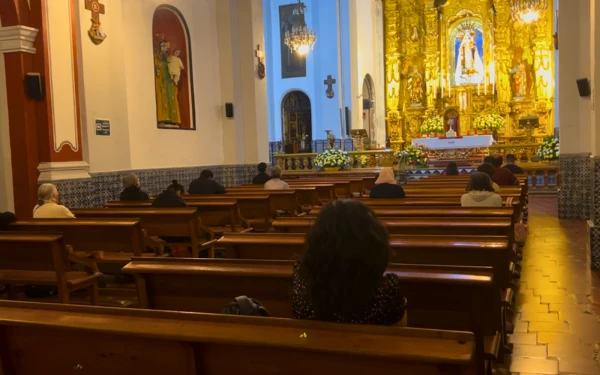The Order of the Barefoot Carmelites announced that, after more than four centuries of presence in the south of Mexico City, the Temple of Our Lady of Carmen will leave in San Ángel due to the decrease in religious vocations.
The Carmelites They arrived in Mexico in 1585 with the mission of evangelizing indigenous populations. By 1615, Fray Andrés de San Miguel began the construction of the Temple of Carmen in San Ángel, which was completed and consecrated around 1626. Since then, the temple administration has remained in the hands of the religious order until October of this year, when it will be delivered to the care of the primed archdiocese of Mexico.
Receive the main news of ACI Press by WhatsApp and Telegram
It is increasingly difficult to see Catholic news on social networks. Subscribe to our free channels today:
Fray José Miranda Martín, Conventual and Ecónomo of the province, explained in an interview with ACI Press that “there are no vocations, we are reduced in number, and work is being loaded a lot in some (friars).”
He added that the decision was taken after a visit from the authorities of the Order and a half ago, in which they found that there are “very few friars, many already adults, with few possibilities of apostolic life, other patients and that there are not enough vocations.”
In addition, he informed that they will also deliver the Temple of Our Lady of Carmen in the center of the State of San Luis Potosí, and that the Provincial House in Mexico City will move from the Río Mixcoac neighborhood to the convent of San Joaquín, in Tacuba. Currently, the barefoot Carmelites have 16 communities in nine states of the Republic, in addition to the female branch – the barefoot Carmelite nuns – and the secular order integrated by laity.
A call to “yes”
The problem is not exclusive to Mexico. In Guatemala and Nicaragua, the order has also had to deliver temples for the same reason, Fray Martín explained, “it is not only the lack of vocations. Many of the friars are greater.”
“We have a lot of friars between 70 and 90 years. Many of them sick, others of medium age, also with some physical problem that is decreasing their abilities,” he explained.
According to the friar, the main challenge is that many young people “do not trust their ability to receive a vocation of this degree” and they tell themselves: “I am not for this, I am not to be a friar for a lifetime. I am not to stay chaste, obedient and poor.”

For this reason, he exhorted to “believe God who calls”, underlining the importance of trusting that “he speaks, that it is not a fantasy, that they are not psychological problems, that it is not fanaticism, that they are not radicalities without foundation. That it is God who wants to build his church with us, not without us.”
Fray Martín said that responding to this invitation is a task that implies the whole Church, from families to priests, to accompany young people and help them “listen to Jesus’ call. They believe they are capable of that and that God is calling them.”

